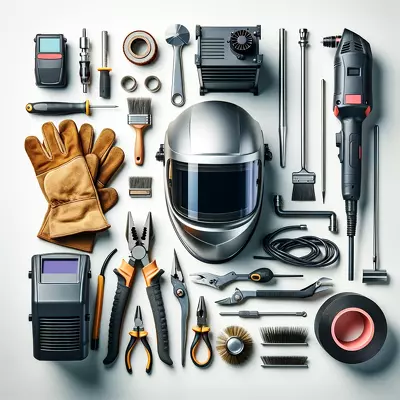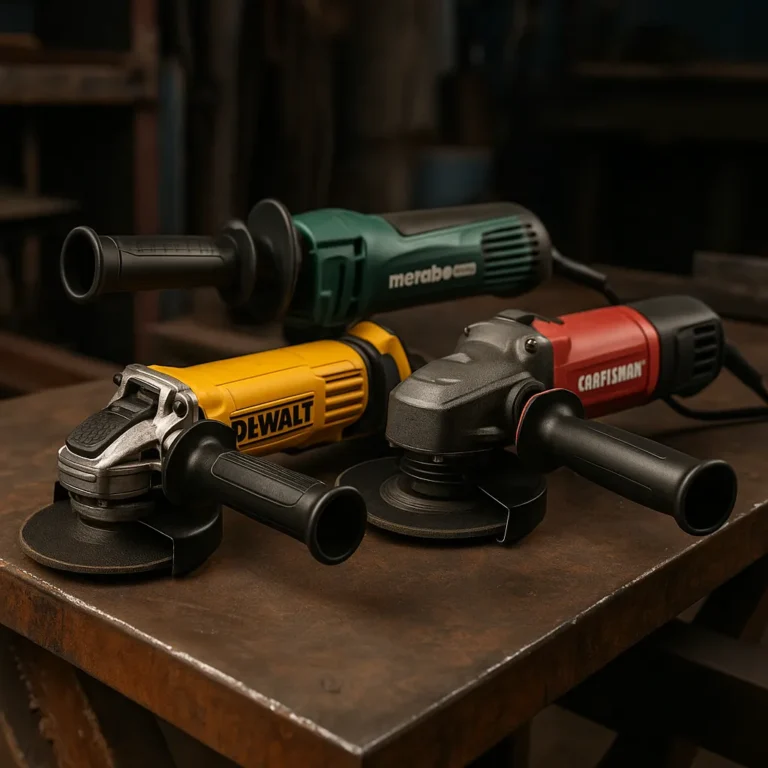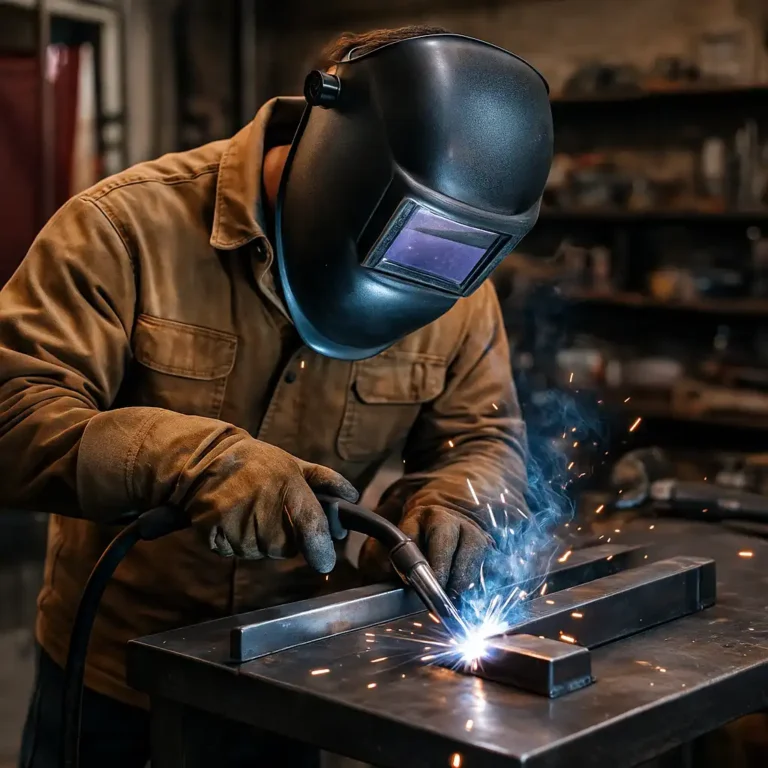Welding Tools and Equipment List: Essential Gear for Every Welder

Disclosure: This post contains affiliate links. As an Amazon Associate, I earn from qualifying purchases—at no extra cost to you.
Last Updated: November 2025
Building a solid welding setup is easier when you know which tools genuinely matter. From safety gear to grinders and clamps, each piece of equipment plays a real role in keeping you protected, steady, and able to lay down cleaner, more controlled beads. Whether you’re starting a small home shop or learning the basics, having the right tools makes every part of the process smoother.
👉 For a quick overview of beginner-friendly welding setups, check our guide on choosing solid starter equipment.
🔍 Welding Safety Gear Every Welder Must Have
Safety gear is always the first investment. Without proper protection, welding becomes harder, more stressful, and far more dangerous.
An auto-darkening helmet lets you see your work clearly before and after the arc starts. Heavy welding gloves protect your hands without sacrificing too much dexterity. A good welding jacket or sleeves shield you from sparks and UV, while safety glasses stay on underneath your hood for backup protection. Lace-free boots help keep hot slag from burning through.
🔍 Essential Welding Machines and Power Tools
Your welder and cutting tools define what projects you can take on. Most beginners start with a MIG welder because it’s simple and forgiving. Stick welders handle dirty metal and outdoor work well, while TIG welders give you fine control for stainless steel and aluminum.
An angle grinder is the tool you’ll reach for constantly—cleaning, beveling, smoothing, and prepping material. A cutoff saw or cutting tool helps you shape metal before you weld.
👉 Before picking your welding tools, take a quick look at our guide on beginner-friendly welding machines to see which setup makes the learning curve smoother.
🔍 Tools for Preparing and Cleaning Metal
Prep work is half the weld. Clean metal always produces better results.
A wire brush knocks off rust and mill scale. Flap discs and grinding wheels smooth and shape edges. A chipping hammer is essential for removing slag when stick welding. Deburring tools clean up sharp edges after cutting. Clamps and magnets hold parts in place so you can focus on torch movement instead of keeping the joint together.
🔍 Tools for Holding, Measuring, and Positioning Material
Accurate fit-up makes welding easier and the final joint stronger.
Welding clamps lock pieces in place. Magnetic squares help you hold angles steady. Tape measures, speed squares, and straightedges keep your layout consistent. Soapstone or metal markers give you clear, heat-resistant lines on steel.
🔍 Tools for Better Weld Control and Quality
A few small tools make a noticeable difference in your weld appearance and penetration.
Welding pliers remove spatter, trim MIG wire, and clear the nozzle. Nozzle gel keeps MIG tips from clogging. TIG filler rods must match the metal for proper strength. Regulators maintain steady shielding gas flow. A sturdy welding table gives you a stable, grounded surface to work on.
Even budget versions of these tools improve your workflow.
🔍 Optional Tools That Make Welding Easier
These aren’t must-haves, but they save time and help keep your workspace organized as you gain experience.
Auto-cleaning helmet lenses cut down on downtime. Welding curtains protect nearby spaces. A bench vise, cordless drill, files, and upgraded grounding clamps all add convenience as you take on more projects.
📌 Key Takeaways
- The right tools make welding safer, easier, and more consistent.
- Safety gear should always be your first investment.
- Beginners usually benefit most from a MIG welder and a reliable angle grinder.
- Clean prep and solid clamping improve weld quality more than anything else.
- Optional tools help long-term but aren’t required to get started.
🟢 FAQs About Welding Tools and Equipment
Do I need a MIG, TIG, or stick welder to start?
Most beginners choose MIG because it’s simple to learn and works on many projects.
Can I weld without an angle grinder?
You can, but prep becomes much harder. A grinder is one of the most important welding tools you’ll own.
What safety gear is mandatory?
A helmet, gloves, safety glasses, and protective clothing are essential for any welding setup.
✅ Conclusion
A solid welding setup doesn’t need to be expensive or complicated. With proper safety gear, a dependable welder, and the right prep and clamping tools, you can handle most beginner and intermediate projects with confidence. Once you understand how each tool supports the welding process, your welds improve quickly and consistently.






